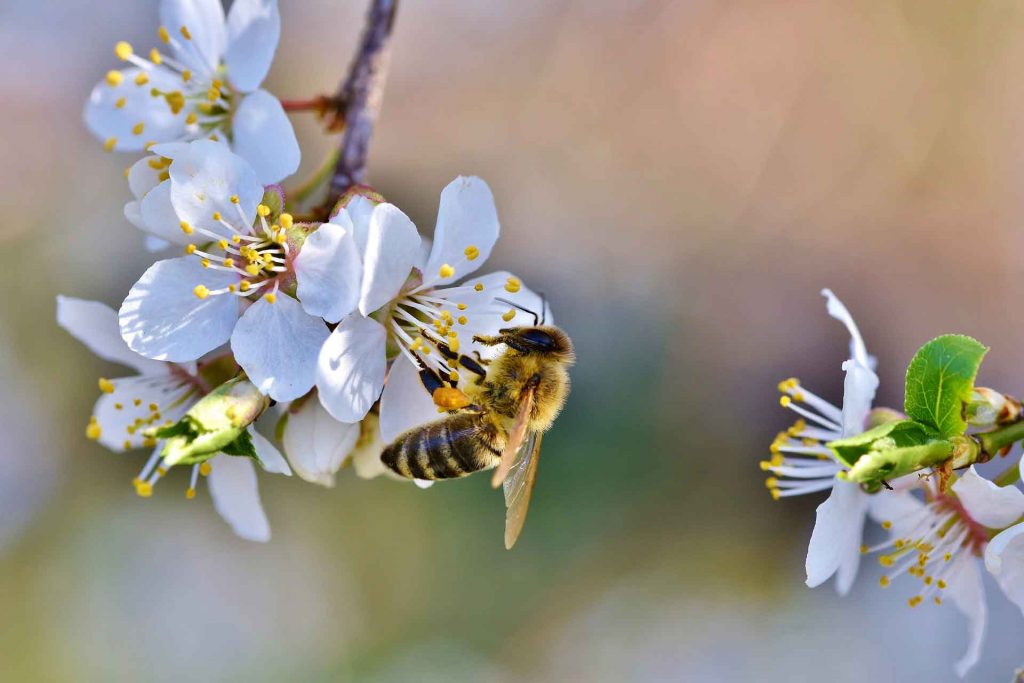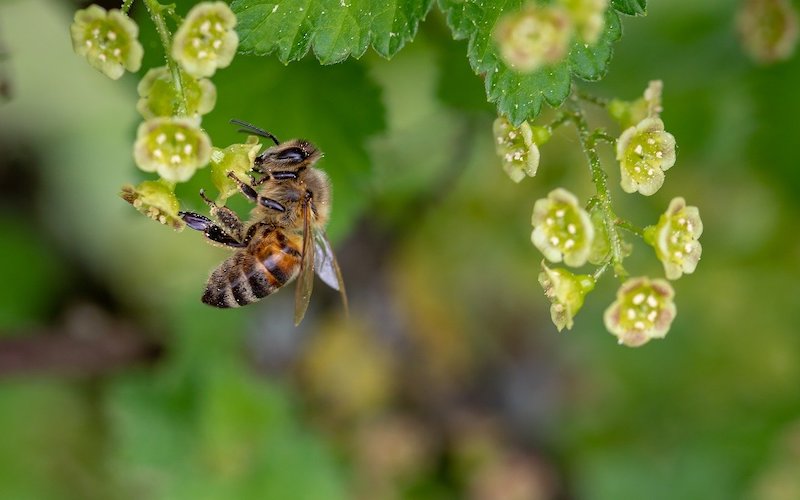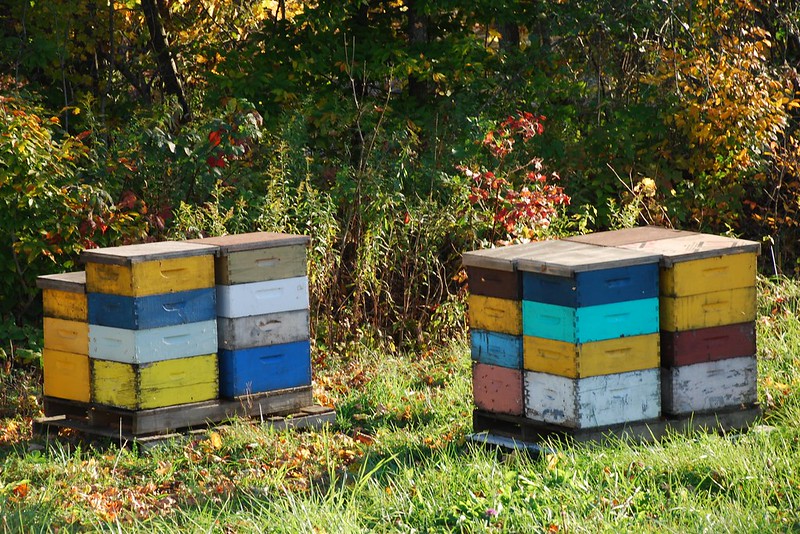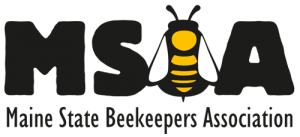A Beekeeper’s Calendar: A Year in the Apiary in Maine
Jennifer Lund, Maine State Apiarist
Below is a general guide for beekeeping in Maine. The timing of the activities may need to be adjusted based on the type of bees you have, your style of beekeeping, your local microclimate, and most importantly weather. Weather is the ultimate driver in beekeeping. Reach out to your local experienced beekeepers and beekeeping organizations who can answer questions and provide guidance and beekeeping advice. Have a great beekeeping year and remember that you will have more success adapting to the bee’s schedule, than they will to yours.
January:
Spend some time during this quiet part of the beekeeping year purchasing, assembling
and/or repairing beekeeping equipment. Catch up on the stack of beekeeping texts and
periodicals you set aside during the busier times of year. If you are a new beekeeper, sign up for a beekeeping course offered by cooperative extension, adult education or local beekeeping associations. Order packages or nucs for late April-June arrival.
February
This is a slow month for bees. Some queens may start to lay eggs near the end. As a
result, the colony will consume food faster than in January. Check honey reserves by
hefting the hive or peeking in on a warm day with no wind. Feed reserved honey frames
(warm to room temperature before adding), sugar candy, or dry sugar if needed. Continue checking entrances for blockages of bees and/or snow.
March
Most queens will be laying eggs by the end of this month. Very little natural forage is
available so monitoring food reserves is critical. It is not uncommon for a hive to make it through the hardest part of winter only to starve in March or April. If honey reserves are low, feed candy or dry sugar. Colonies that consume feed should be monitored carefully and fed as needed. Pollen substitute may be fed to strong colonies with plenty of honey stores in mid-March. Set up equipment for new packages/nucs. Clean smokers and repair/build hive boxes. Install electric fencing if there is bear activity in your area.
April
Brood production is ramping up this month. A few good pollen and nectar sources will start blooming, but poor weather may hinder the ability of foragers to access it. Continue monitoring food reserves and feed light syrup (1:1) inside the hive if necessary. If weather permits (calm, sunny and above 55º), quickly sample wintered colonies for varroa mites using an alcohol wash, then apply mite treatments if Varroa are detected above threshold. Install nucs and packages and feed light syrup until they have drawn out comb in brood chambers.
How-to Guides:
Jen Lund and Kim Skyrm:
Managing Varroa including how to monitor for varroa
May:
Much energy is spent on swarm prevention. Temperatures can still dip into the 30s at
night so beekeepers need to avoid breaking up the brood cluster and make sure that splits have enough bees to keep queen cells and brood warm. Most of your time will be spent managing for population buildup and swarm prevention. Reverse brood chambers if necessary and inspect the brood pattern. Check the queen’s performance and for symptoms of brood disease. Requeen any hives with failing or poor performing queens.
Divide colonies at fruit tree bloom to recoup winter loss, increase apiary size, and for swarm control. If you did not get to it in April, sample colonies for Varroa mites using sugar or alcohol roll and apply mite treatments if Varroa are detected above threshold. Inspect new package bee colonies for health and queen condition. Manipulate frames if necessary to aid in comb construction and continue feeding nucs and package bees until they have drawn out the comb in their brood chambers.
How-to Guides:
Jen Lund and Kim Skyrm:
Managing Varroa including how to monitor for varroa
University of Guelph:
Nucleas Hive Installation
Splitting Hives
Supering Hives
Jen Lund
Installing Packages
June:
It’s time to register your apiaries! Maine’s first honey flows start at the very end of May/early June so add honey supers to hives as needed. Manage for swarm prevention by equalizing hives and making splits/nucs.
How-to Guides:
Jen Lund
Maine Colony Registration
University of Guelph:
Swarm Control
Cornell Dyce Lab:
Colony Management Summer
Jen Lund and Kim Skyrm:
Managing Varroa including how to monitor for varroa
July:
Honey bee colonies hit their peak during this month. Add empty honey supers as needed. You can harvest honey when the honey flow slows (usually the end of July) or hold filled supers in a cool, protected location until the fall to evaluate whether the honey is needed for overwintering. Monitor Varroa populations. A mite treatment may be necessary prior to supering for the fall honey flow.
How-to Guides:
Jen Lund and Kim Skyrm:
Managing Varroa including how to monitor for varroa
University of Guelph:
Harvesting Honey
August:
The colony is now just past its peak population and starting to raise larva that are destined to become winter bees. As the population of bees decreases in preparation for winter, it is important to keep an eye on mite levels which will continue increasing. Sample colonies for varroa mites using an alcohol wash and if Varroa are detected above threshold, apply mite treatments. Make sure you follow the label instructions if you have honey supers on the hive.
The last honey flow (goldenrod) usually starts in August so super hives as needed. Unite weak hives and position brood and honey stores in anticipation of winter. Check the status of your queens, there is still time to re-queen if there is a problem. Keep an eye on smaller hives for signs of robbing.
How-to Guides:
Jen Lund and Kim Skyrm:
Managing Varroa including how to monitor for varroa
Megan Milbrath
Sustainable Beekeeping- late summer splits
September:
The year is starting to wind down. Drones are being driven out and the queen has
drastically reduced her egg laying and the hive is making its last foraging push before winter. If weather permits, sample colonies for varroa mites one final time mid-
September. It is not unusual to have a spike in varroa mite populations during this month as surrounding hives collapse from varroa infestations and mites migrate into your hives (called the “mite bomb” effect). Treat if necessary (or as a fall knockdown) with temperature-appropriate methods. Mouse guards should already have been installed.
Harvest any extra honey produced during the fall honey flow and remove empty/partially filled supers by mid-September. Extract only ripe (capped) honey. Partially filled frames should be fed back to the bees above the inner cover. Reduce entrances and feed heavy (2:1) syrup or frames of honey to hives low on honey stores. Take measures to prevent robbing.
How-to Guides:
Jennifer Lund:
Fall Management
Cornell Dyce Lab :
Colony Fall Management
University of Guelph:
Feeding Bees and Overwintering
October:
Feeding of heavy 2:1 syrup should be completed by mid-October or the bees may not
have enough time to cure it for winter use. Maine beekeepers are focusing on late season mite treatments, whether or not to wrap for wind protection, use some type of insulation, what to do for moisture control, and how much food to leave on the hive. MSBA’s webinars and Bee Line newsletters touch on all of these topics and more. They can be viewed under the website’s Membership tab. Make plans for attending the MSBA Annual Meeting in October.
November:
Provide upper ventilation. Remove mite treatments prior to wintering or wrapping the
colony. Colonies may be wrapped and provided with an insulating board by
Thanksgiving.
How-to Guides:
Cornell Dyce Lab:
Wintering bees in cold climates (cornell.edu)
Bill Hesbech :
Winter Managment – Condensing Hives
December:
Bees will spend most of the month in a tight cluster. When the weather is above 40º they will move to new areas of the hive and take cleansing flights. Gauge food levels in
wintering colonies by lifting one corner of the hive and feeling the “honey weight”. If it
is warm (above 40º without wind) you can quickly peek through the hole in the inner
cover to see where the bees are in the hive and assess their food reserves. After every
snow storm, clear entrances to allow for proper ventilation. Then sit back, enjoy a big
mug of tea with honey, and start reading your favorite bee books and magazines.





